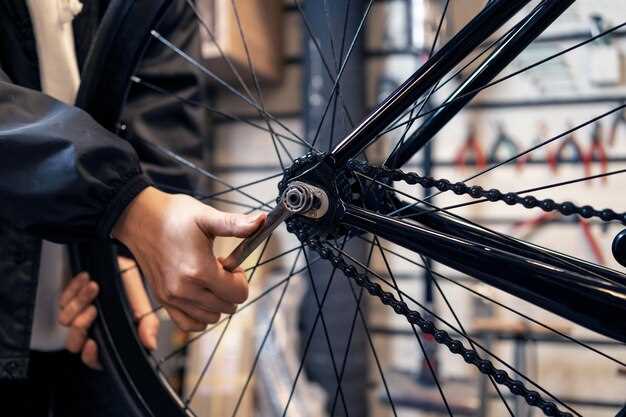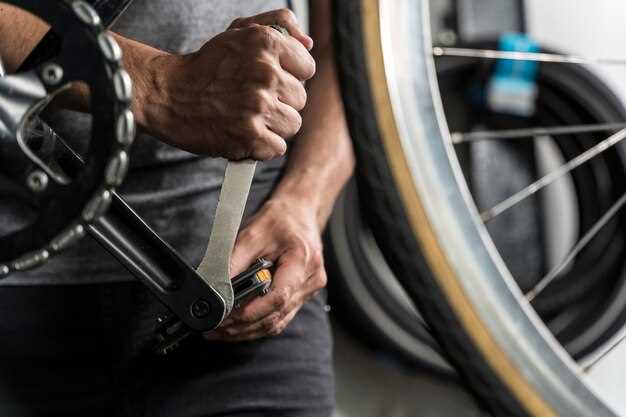
Proper bike suspension is crucial for a smooth and safe ride, ensuring that both forks and rear systems function optimally. Over time, the components may experience wear and tear, which can significantly affect your biking experience. Recognizing the signs that your suspension requires immediate attention is essential for maintaining your bike’s performance and your safety on the road or trail.
There are several indicators that can alert you to possible issues with your bike’s suspension. One common sign is a noticeable decrease in shock absorption, which can manifest as a harsh ride over bumps and rough terrain. If you find that your bike feels excessively bouncy or unresponsive, it may be time to inspect the forks and rear shock for any signs of damage or wear.
Another critical indicator is oil leakage around the forks or shock absorbers. Any visible fluid can suggest that seals are damaged and the suspension is losing its ability to dampen impacts effectively. Additionally, if you notice unusual noises such as clunking or popping sounds when compressing the forks, this may indicate mechanical issues that require immediate investigation to avoid further damage.
Unusual Sounds from Forks During Rides

When you ride your bike, the suspension forks play a crucial role in absorbing shocks and providing optimal handling. However, if you start to notice unusual sounds emanating from your forks, it could indicate a potential problem that requires immediate attention. Here are some common sounds and their implications:
- Clicking or Popping:
This sound often occurs when there is insufficient lubrication within the fork mechanism. It can also indicate that the stanchions are not securely seated in the crowns, which can lead to handling issues during your ride.
- Squeaking:
Squeaking noises typically suggest the presence of dirt or debris within the suspension components. This can hinder performance and compromise the overall handling of your bike, making it crucial to clean and service the forks.
- Grinding:
If you hear a grinding noise, it’s a sign that the bushings or seals may be worn out. This condition can drastically affect handling and safety, making it imperative to inspect the forks as soon as possible.
- Rattling or Chattering:
Rattling sounds often occur when there are loose parts within the fork assembly. This can lead to instability in handling and can compromise the safety of the bike.
Ignoring these unusual sounds can lead to more severe mechanical issues, affecting your bike’s handling and overall performance. Regular maintenance and prompt attention to unusual noises are key to ensuring a safe and enjoyable ride.
Changes in Handling and Stability on Different Terrains
When riding on various terrains, the performance of your bike’s suspension, particularly the forks, plays a crucial role in the overall handling and stability. If you notice any changes in how the bike responds to uneven surfaces, it may indicate that your suspension requires immediate attention.
On smooth roads, the bike should feel stable and responsive, but if you experience excessive vibration or wobbling, it could be a sign that the forks are not providing adequate dampening. This lack of control can lead to an uncomfortable ride and loss of confidence, especially at higher speeds.
When transitioning to rougher terrains, such as gravel or dirt paths, you should expect the suspension to absorb impacts effectively. If the front forks fail to compress or seem too stiff, it may cause the bike to bounce excessively, impacting traction and maneuverability. Conversely, if the forks feel overly soft, they may bottom out, compromising stability during descents.
In technical sections with obstacles like roots or rocks, proper fork performance is essential for maintaining control. If you find that your bike is struggling to navigate these challenges or if you experience unusual feedback through the handlebars, this can signal that the suspension system is not functioning correctly. It’s essential to address these issues promptly to enhance both safety and riding experience.
Lastly, changes in handling may also affect your ability to climb or descend efficiently. If you notice significant shifts in weight distribution or an inability to maintain traction, it could indicate that the suspension setup needs recalibration. Ensuring that your forks are properly adjusted will not only improve performance across different terrains but also protect your bike from potential damage in the long run.
Visible Wear and Fluid Leaks on Suspension Components

Maintaining optimal handling and performance of your bike heavily relies on the condition of its suspension components. One of the most significant indicators that your suspension requires immediate attention is visible wear. Look for signs of damage such as scratches, dents, or worn-out seals on the fork stanchions and shock bodies. Any irregularities in these areas can lead to decreased performance and compromised safety.
Fluid leaks are another critical issue to monitor. If you notice oil pooling around the suspension components or finding a wet residue on the seals, it is a clear sign that the seals may be failing. Healthy suspension systems should retain their fluid without any leakage. Leaking fluid not only affects the damping qualities but also leads to reduced responsiveness during rides, impacting your overall handling abilities.
Regular inspections of the suspension for both visible wear and fluid leaks will help in maintaining effective performance and prolonging the lifespan of your bike’s suspension system. Addressing these issues promptly ensures that your bike remains safe and provides the handling characteristics necessary for an enjoyable ride.
